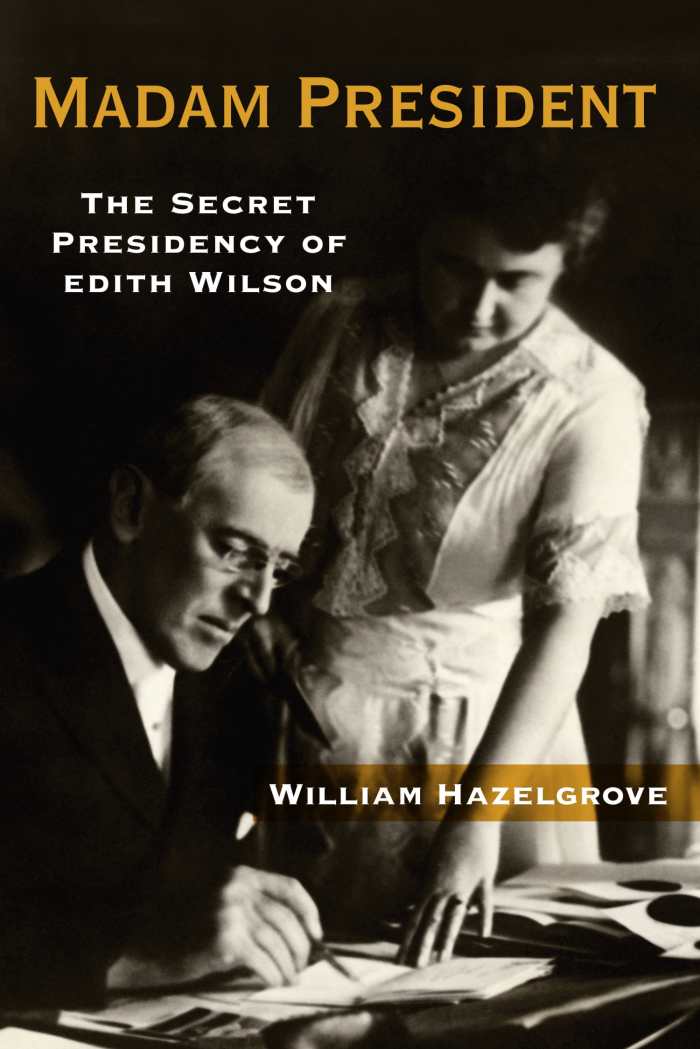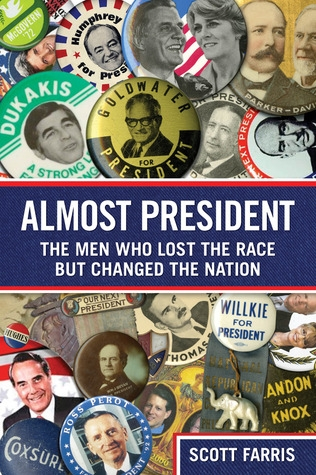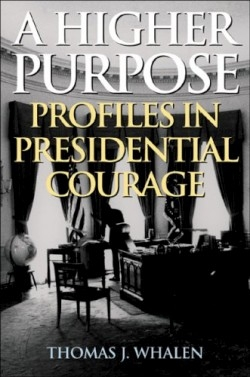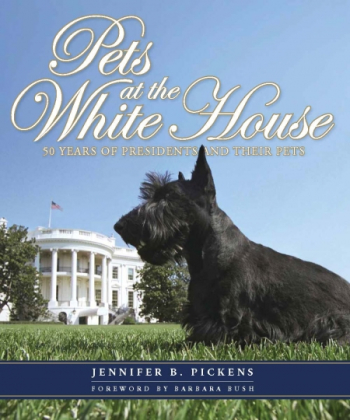Presidents' Day: Read Up on the Job
Reading up on the job is the best way to celebrate President’s Day. It’s an important position, one that garners attention and criticism from the entire world. Perhaps that’s why there are so many books on the presidency and those who have held the title. So in honor of President’s Day, read any of these five books reviewed here. Books on those who have held the position, those who almost did, and those who influenced. Don’t forget, presidents aren’t the only ones who live in the White House.
Madam President
The Secret Presidency of Edith Wilson

William Hazelgrove
Regnery History
Hardcover $29.99 (352pp)
978-1-62157-475-0
Buy: Local Bookstore (Bookshop), Amazon
Women have assumed presidential power before, as this compelling portrait of Edith Wilson shows.
Has America already had a woman president? William Hazelgrove’s Madam President: The Secret Presidency of Edith Wilson makes a compelling case to that effect, detailing how First Lady Edith Wilson assumed many of her husband’s responsibilities after Woodrow Wilson suffered a crippling stroke.
Pairing historical facts with a lively, engaging narrative, Hazelgrove sets the scene leading to the President’s health crisis. Wilson came to office with preexisting hypertension and arteriosclerosis. World War I and the unsuccessful fight to join the League of Nations took a further toll on his well-being. Following the October 1919 stroke, Wilson was left partially paralyzed and blind in one eye. He was also physically weak, psychologically overwhelmed, and hardly fit to serve.
Hazelgrove’s portrait of Edith reveals a capable, devoted woman, unexpectedly forced to play a major part in governing the United States. The pressure placed upon Mrs. Wilson was intense. The President’s post-stroke condition had to be kept confidential so as not to alarm an already anxious nation.
Wilson’s political rivals needed to be subdued as well, particularly “venomous serpent” Senator Henry Cabot Lodge, as Edith called him, and the pugnacious Theodore Roosevelt, both men portrayed vividly by Hazelgrove. Despite his health issues, Wilson did not concede to Vice President Thomas Marshall. Therefore, until the end of Wilson’s term in 1921, Edith quietly handled a triage of Oval Office matters while acting as her husband’s confidante and caretaker.
Gesturing to Edith Wilson as “Madam President” is shown to be deserved, though her role was never officially acknowledged. For a woman who had little formal education or prior political experience, Edith Wilson’s efforts to keep the White House afloat are shown to have been extraordinary.
Madam President brings Edith Wilson’s so-called petticoat government to its rightful light, and offers a poignant look at Woodrow Wilson, as a lover, a husband, and a leader.
MEG NOLA (November 1, 2016)
Almost President
The Men Who Lost the Race but Changed the Nation

Scott Farris
Lyons Press
Hardcover $24.95 (352pp)
978-0-7627-6378-8
Buy: Local Bookstore (Bookshop), Amazon
“History is written by the victors, but to ignore the contributions made by losing presidential candidates is to warp our understanding of American history,” says the author in this enlightening and appealing narrative about politicians unfairly called also-rans. The nine losing presidential candidates who Farris concludes made the greatest contributions to political change—Henry Clay, Stephen Douglas, William Jennings Bryan, Al Smith, Thomas Dewey, Adlai Stevenson, Barry Goldwater, George McGovern, and Ross Perot—receive their own chapters, while Al Gore, John McCain, and John Kerry are discussed in one chapter, and others are described in the Appendix.
The earliest losing candidates, as the reader will quickly note, led movements for major political change while the country was young and political factions were evolving into the modern Democratic and Republican parties. Henry Clay, “the greatest legislator in American history,” according to the author, set the framework for liberalism and the Republican Party of Lincoln. Stephen Douglas lost the 1860 election to Lincoln but established the precedent for the loyal opposition, which allowed Lincoln to govern the wartime nation with more authority than he would have had without Democrats constructively challenging his policies. Thomas Dewey, who the author arguably claims is the twentieth century’s most influential Republican, advocated pragmatism that became the blueprint for Eisenhower, Nixon, and to a lesser extent, Reagan and the first Bush.
More recent losing candidates, such as Stevenson, McGovern, and Perot, made vaguer contributions: Stevenson set an intellectual tone for candidates and helped the Democrats shed the image of being the party of big city bosses. George McGovern’s inclusive movement gave more clout to women and minorities, and Ross Perot’s anti-elitism brought about calls for budget reductions and term limits. As significant as these changes were, they did not lead to immediate success for the movements these candidates led.
The author has also been a political player, as the former Bureau Chief for UPI, the 1998 Democratic congressional nominee from Wyoming, and the manager of several political campaigns. Here he offers a different take on politics, from the view of losers who ended up winners and leaders. General readers as well as political scholars and politicians will read this informed account with interest.
KARL HELICHER (November 18, 2011)
A Higher Purpose
Profiles in Presidential Courage

Thomas J. Whalen
Ivan R. Dee
Unknown $26.00 (272pp)
978-1-56663-630-8
Buy: Amazon
At a time when political courage on all levels has been replaced by thirty-second sound bites and by polls designed to identify how people would respond to various actions, these nine case studies remind the reader that courageous presidential decisions are necessary, will have important consequences, and could cost the makers their reputations and reelections. Whalen defines political courage as “that special quality of valor exhibited by certain presidents in times of crisis, placing conscience over expediency, regardless of personal or political cost.” This definition is similar to the one used by John F. Kennedy in Profiles in Courage, the book which inspired Whalen’s account.
Whalen, who holds a doctorate in American history from Boston College and is an assistant professor at Boston University, clearly admires John F. Kennedy. His earlier book, Kennedy Versus Lodge: The 1952 Massachusetts Senate Race, examines the election that made Kennedy a national figure, and the author includes an impassioned retelling of Kennedy’s fight to desegregate the University of Alabama as one essay in this book.
Each essay is approximately twenty-five pages and includes a useful biographical sketch, as well as a concise, informative analysis of each decision, describing its immediate effect on the president and the long-term impact on the country. Some stories are more familiar: Abraham Lincoln and the Emancipation Proclamation, Theodore Roosevelt as trust regulator, and Harry Truman and the firing of General Douglas MacArthur.
Other essays discuss lesser-known controversies, such as Jackson’s successful fight to de-charter the Bank of the United States because it came to favor “the few at the expense of the many.” The victorious Jackson, although comfortably re-elected in 1832, saw the anti-Jackson Whig Party emerge as a force and Jackson became the only sitting president to receive a formal reprimand.
In 1881, Vice President Chester A. Arthur, who, as Whalen shows, enjoyed a career as a political hack, became president when James Garfield was assassinated. He angered his former cronies by becoming an advocate of good government, relentlessly lobbying congress for civil service reform, which passed as the 1883 Pendleton Act. Ten years later, in 1893, President Glover Cleveland won a short-lived victory that stopped America from annexing Hawaii. However, in 1898, President McKinley, more enthusiastic about an American empire than Arthur, formally annexed Hawaii, against the will of the Hawaiians.
These essays are based on secondary sources and offer little for the scholar. However, for high school students, undergraduates, and general readers, they are an enjoyable and informative recounting of some of American history’s greatest events and of the brave presidential decisions that made them possible.
KARL HELICHER (August 8, 2007)
Adams vs. Jefferson
The Tumultuous Election of 1800

John Ferling
Oxford University Press
Unknown (288pp)
978-0-19-516771-9
Buy: Amazon
Something unprecedented happened in 1800. The leader of a nation was booted out of office—peacefully. Without bloodshed, power in the United States of America was transferred from the defeated incumbent, John Adams, to the sitting vice president, Thomas Jefferson, a man from the opposing party and of contrasting political principles. For many historians, this was the consummation of the American Revolution.
From Oxford’s “Pivotal Moments in American History” series, this book offers an engaging study of an election that both underscored the emergence of America’s political parties and illuminated a glaring flaw in the young nation’s electoral system. The author, a State University of West Georgia history professor who has written several books on the founding fathers, offers a crisp review of the political decade leading up to the election as well as a close study of the four men—Adams, Jefferson, Charles Cotesworth Pinckney, and Aaron Burr—who sought the presidency.
Ferling describes the electoral college system established in the Constitution as “a calamity waiting to happen.” In a rare muddle-headed moment and acting upon the ill-conceived notion that with only one vote per elector there would be no clear winner, the founding fathers had created a system where each elector was to cast two votes; the person receiving the largest number of votes would be president and the runner-up vice president. This procedure wreaked havoc in 1796, failed badly in 1800, and was subsequently scrapped, but the electoral college remains, continuing to create mischief in today’s elections.
Without breaking new ground, Ferling affirms what others have written before, that Adams and Jefferson were an odd couple. Friends for much of their lives, they had mismatched temperaments, disparate lifestyles, and different dreams for the young republic. Individually, with Adams fearing a democratic tyranny and Jefferson an overbearing government, they were the embodiment of the Federalist and Republican parties.
Ferling writes that it was widely believed by the nation’s founders that what they put in place would be resistant to change. In this tightly stitched history, the reader can clearly see the political threads of 1800 that still run through the fabric of today’s presidential elections. Take campaigning. Four years earlier, in the election of 1796, the candidates had held onto the political tradition of early America—that the voters should come to them rather than they to the voters. By the election of 1800, Jefferson and Adams were acting like candidates, and their parties were engaging in what today would be decried as negative campaigning.
ROB MITCHELL (August 18, 2009)
Pets at the White House
50 Years of Presidents and Their Pets

Jennifer B. Pickens
Fife & Drum Press
Hardcover $49.95 (232pp)
978-0-615-58063-0
Buy: Amazon
In Pets at the White House, Jennifer Boswell Pickens offers a delightful series of anecdotes and photographs of our nation’s First Pets, creating an endearing volume that will appeal to animal lovers and presidential theorists alike.
Although her account officially starts with the Kennedy years, Pickens also provides background details on the animals kept by earlier presidents, from Washington’s donkeys to Zachary Taylor’s horse, which was often spotted grazing on the White House lawn. From President Taft’s cow, Pauline Wayne, to Tad Lincoln’s turkey, forerunner of the annual Thanksgiving pardoned turkey, seemingly no animal has been overlooked. Pickens shares both legends and documented tales of an astounding variety of animals that have made their homes with our nation’s First Families. She reveals details about pets whose presence helped humanize presidential hopefuls and ensure election, and those whose constant companionship became part of their owners’ public images.
“If you want a friend in Washington, get a dog,” President Truman famously commented. Pickens agrees. Her theory that “Animals have played a role in forming perceptions of the character and personalities of our Presidents” is supported by both the stories and the photographs she includes in her book. The Kennedy family’s “menagerie of animals, ranging from dogs, cats, birds, and hamsters to ponies, parakeets, ducks, and more,” for instance, is iconic. Few who remember the early 1960s are unfamiliar with photos of Caroline sitting atop her pony, Macaroni. Perhaps less familiar are the Kennedy’s dogs and Jacqueline Kennedy’s essay contest, the winners of which received puppies from a litter those dogs produced. Similar tales about other First Families provide more charming and warm-hearted particulars that reveal the often hidden personalities of the many famous people who have occupied the White House.
That the Nixon family’s poodle ate some of the fish from Lady Bird Johnson’s small goldfish pond or that the Ford family’s cat did not like Henry Kissinger are not matters of great national import, but they certainly are entertaining details, and readers are invited to draw their own conclusions about their significance. Whether President Reagan’s Cavalier King Charles Spaniel, Rex, was the political asset some claim, “helping him dodge questions from the press,” does not even matter. The fact that Rex reacted to the rumored ghost in the Lincoln Bedroom and received substantial fan mail from the public is far more telling.
George and Barbara Bush’s dog Millie wrote her own book and raised more than a million dollars for literacy causes, and the Clinton’s cat Socks not only had his own books, but also starred on the White House’s web page. No one believes that either Millie or Socks actually wrote anything, yet people relate to the famous pets much as they do to their own less-celebrated special friends. America is a pet-friendly nation whose citizens seem to expect their leaders to share their love of animals.
Pickens has created a delightful book. Its photos, many taken by White House staff photographers, are wonderful, and the accompanying text, although brief, is revelatory and entertaining. Pets at the White House is sure to be enjoyed by America’s millions of pet lovers and appreciated by those who follow the the lives of the nation’s First Families.
CHERYL HIBBARD (September 27, 2012)
Hannah Hohman
